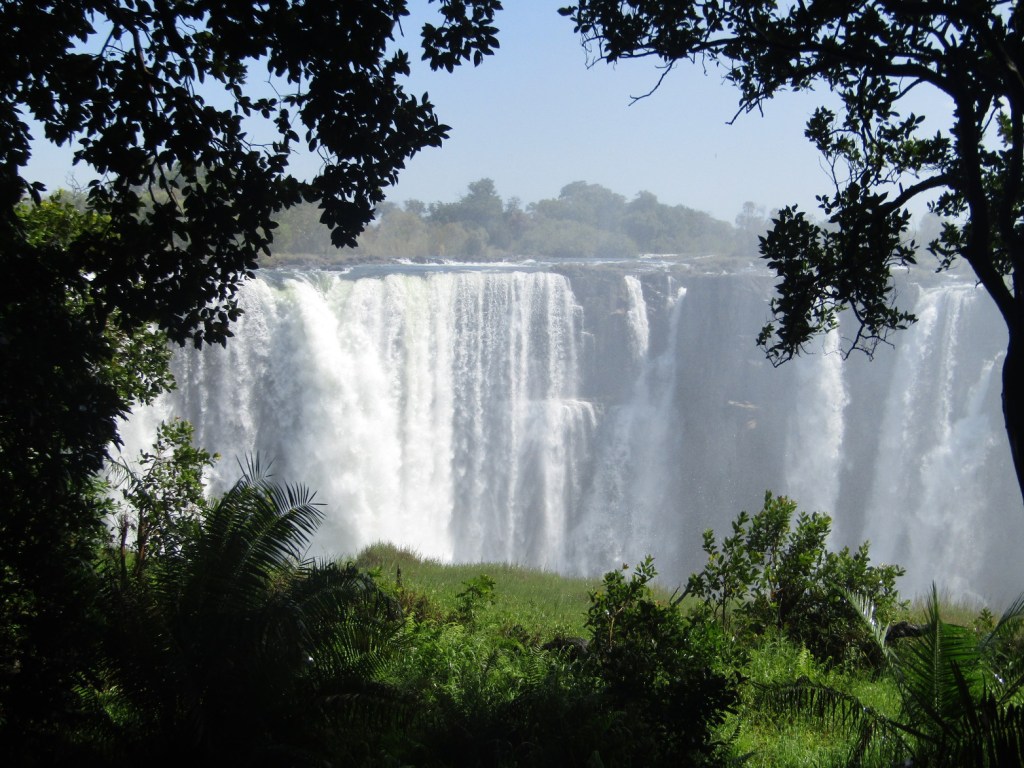Victoria Falls in 2020? Here’s Proof It is Not Drying Up
Last November, BBC posted an article asserting that the Victoria Falls in Zimbabwe — undoubtedly one of Africa’s greatest natural wonders, had dried up. In the article, Hardtalk journalist Stephen Sackur makes an emphatic case for climate change and speaks about how this natural wonder could be doomed because of climate change impacts. He refers to one in one hundred year droughts and has a chat with a local expert.
This story has sparked great debate and uproar among those in the tourism industry in both Zambia and Zimbabwe. The story has already had a negative impact on tourism and many sectors in the region are dismissing this story, daring to call it ill-researched and irresponsible journalism. Experts in the region do not deny climate change and the impact this is having on the amount of water that cascades over this natural wonder but they are saying Mr. Sackur’s story is incomplete.
The truth on the ground is that in certain parts the Falls has reduced to a trickle but this is not entirely uncommon. This seasonal variation is part of what makes the Falls, the Falls. The regional impacts of climate change are undeniable with many issues in the Zambezi River Basin such as deforestation, uncoordinated hydropower planning, and the limited capacity of river basin authorities. However, some water still falls and there remains a slight thunder in this season especially on the Zimbabwean side of the waterfall.
Some are calling it climate alarmism while others are saying this is the driest they have seen Victoria Falls in the most recent past. Whatever side you are on, this back and forth calls to mind the issues of narrative ownership. Mr. Sackur is a world-renowned journalist and his take on the issue though researched from his perspective seems to alienate certain groups on the ground.
The need for Africans to tell their own stories has never been more pressing than it is in this current world of limited attention span and “viral” stories. With internet access and the ability for everyone to put their truth out there, there are now several versions of reality. Some well-intended yet causing more harm than good.
Conservation in Africa definitely has different narratives framing its issues. Oftentimes, the field is painted as needing a hero, some external party that seems to know more than those closest to the problem. Moreover, this hero has greater access to networks, funds, and media meaning the hero’s story is taken at face value with hardly any questioning. This at times results in the story regarding the state of Africa’s conservation, needs, and progress at times being out of hand.
There is however widespread consensus that this needs to change. Concepts such as community philanthropy are driving grassroots to change from within. “Small dogs” are standing up for themselves and taking on the likes of BBC by sharing their reality on social media and rubbishing reports that the Victoria Falls is nothing but dry.
Africa is rising and the perceived victim is grabbing a hold of her destiny. It is important that we make the conscious effort to hear from and amplify the voices of the voiceless. The less privileged members of our society whose truth could direct better use of donor dollars rather than often grandiose, ill-informed assumptions about needs.
There is a story often told in the water, sanitation, and hygiene (WASH) sector about mismatched perceptions and donor funds. The story goes as follows — an international organization built toilets in a community that clearly needed WASH solutions but to their surprise and months later, these toilets were not used but in mint condition and cleaned every day by the local women. When asked why the community was not using these wonderful flushable toilets, it was discovered that culturally, individuals cannot be seen going to the toilet as this was considered taboo. The public toilets could therefore not be used by the community. Well-intentioned funds spent on facilities that were rendered useless.
The story on Victoria Falls is not entirely inaccurate but there is no denying the negative impact it has had on the tourism industry all the while simply being one perspective on the issue. Issues framing in conservation and which bits of information we share in what light has a huge impact on perception, interaction and eventually interventions. Similar to the toilet story shared to drive the point home, we need to do better by those whose lives are inextricably linked to the facts and figures we share. We need to be thorough about our research and endeavor to share both sides of the story.
Based on recent photographs of the Victoria Falls, Stephen Sackur is not telling an inaccurate story but he is only telling half of it which is dangerous. Hopefully, the other side of the story will pick up enough speed for tourism to the region to not be too heavily impacted.
Below are images of Victoria Falls taken by Wongani last December 2019 from the Zambian side with some visible water on the Zimbabwean side. So while the Zambian side of the Falls seems dry, all hope is not lost.

This video was taken last 20th of January 2020:
